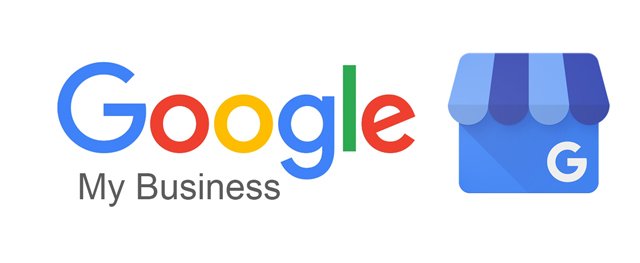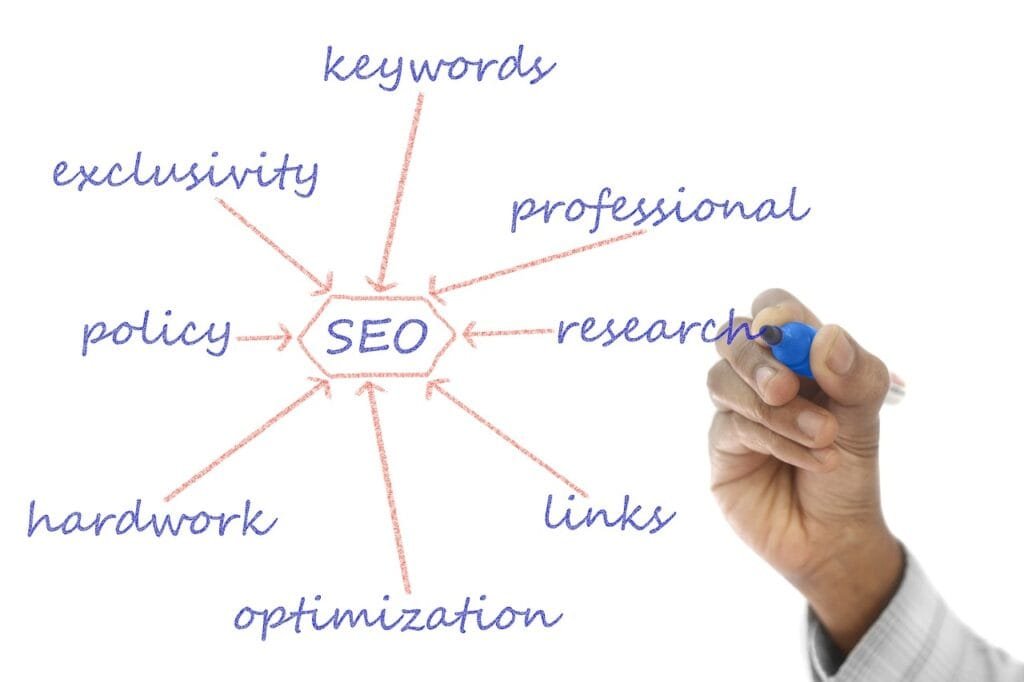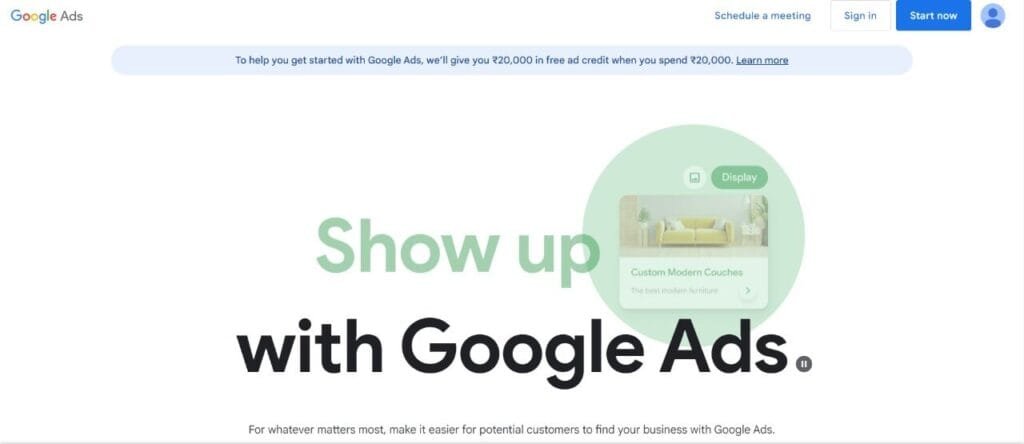This Article has been revised, edited and added to, by Poulomi Chakraborty.
- The Importance of Google My Business for Financial Services
- Optimizing Key Elements of Your Google My Business Profile
- Advanced Strategies for Optimizing Google My Business
- Leveraging Customer Reviews and Feedback
- Enhancing Your Google My Business Profile with Additional Features
- Leveraging Google My Business for Local SEO Domination
- Integrating Google My Business with Your Website
- Optimizing for Voice Search
- Engaging with Local Media and Publications
- Collaborating with Other Local Businesses
- Encouraging User-Generated Content
- Implementing Local Link Building Strategies
- Utilizing Google Ads for Enhanced Visibility
- Keeping Up with Google My Business Updates
- Expert Opinion
- Conclusion
In the competitive world of financial services, establishing a strong online presence is essential. One of the most effective ways to enhance your visibility and attract local clients is by optimizing your Google My Business (GMB) listing. Google My Business is a free tool that allows businesses to manage their online presence across Google Search and Maps. For financial services, a well-optimized GMB profile can significantly boost local SEO, making it easier for potential clients to find and engage with your business.
Optimizing Google My Business is not just about filling out your profile; it involves strategic actions to ensure your listing stands out and provides valuable information to potential clients. In this article, we will explore how to optimize your Google My Business listing for financial services, including detailed strategies, practical tips, and actionable insights.
The Importance of Google My Business for Financial Services

Before diving into the optimization techniques, let’s understand why Google My Business is crucial for financial services. Financial institutions, such as banks, credit unions, investment firms, and insurance companies, often rely on local clientele.
When people search for financial services online, they typically look for nearby options. This is where Google My Business plays a pivotal role.
A well-optimized GMB listing can enhance your local search rankings, making your business more visible to potential clients in your area. It provides essential information such as your business name, address, phone number, website, and hours of operation.
Additionally, GMB allows you to post updates, respond to reviews, and share photos, helping to create a more engaging and informative online presence.
Comparing Traditional SEO and Google My Business Optimization
While traditional SEO focuses on improving your website’s visibility on search engines, Google My Business optimization zeroes in on enhancing your local search presence. Both strategies are essential, but they serve different purposes and require different approaches.
Let’s compare these two aspects to highlight their unique benefits and roles in your overall SEO strategy.
Traditional SEO
Traditional SEO aims to improve your website’s ranking on search engine results pages (SERPs) through techniques such as keyword optimization, content creation, backlinking, and technical SEO.
This approach is broad, targeting a wide audience and focusing on driving organic traffic to your website. For financial services, traditional SEO can help attract visitors looking for general financial advice, educational resources, or specific financial products.
For instance, a well-optimized website with high-quality blog posts on investment strategies or tax planning can attract visitors from various regions. Traditional SEO builds your brand authority and trustworthiness over time, contributing to long-term growth.
Google My Business Optimization
On the other hand, Google My Business optimization is hyper-local, focusing on attracting clients within a specific geographic area. It involves managing and enhancing your GMB profile to appear in local search results and Google Maps.
This strategy is crucial for financial services that depend on local clientele, such as community banks, local insurance agents, and financial advisors.
For example, when someone searches for “financial advisor near me,” Google My Business listings appear prominently in the search results, often accompanied by a map. An optimized GMB profile can help your business stand out in these local searches, driving more foot traffic and phone calls.
While traditional SEO and GMB optimization both aim to increase visibility, they complement each other. A comprehensive SEO strategy for financial services should incorporate both approaches to maximize online presence and attract a diverse audience.
Getting Started with Google My Business
To begin optimizing your Google My Business listing, the first step is to claim and verify your business. If you haven’t done this yet, go to the Google My Business website, sign in with your Google account, and follow the prompts to add your business.
Verification typically involves receiving a postcard from Google with a verification code, which you’ll enter into your GMB account.
Once your business is verified, you can start filling out your profile. It’s important to provide accurate and up-to-date information, as this helps build trust with potential clients and improves your local search ranking. Here are some key elements to focus on:
- Business Name: Ensure your business name is accurate and consistent with other online listings.
- Address: Provide your complete address, and make sure it matches the address on your website and other directories.
- Phone Number: Use a local phone number, as this can boost your local SEO. Avoid using call tracking numbers, which can confuse clients and search engines.
- Website: Include your website URL to drive traffic from your GMB listing to your site.
- Hours of Operation: List your regular business hours, and update them for holidays or special events to keep clients informed.
Optimizing Key Elements of Your Google My Business Profile

Crafting a Compelling Business Description
Your business description is a crucial element of your Google My Business profile. It provides potential clients with an overview of what your financial services offer. This is an opportunity to highlight your unique selling points, expertise, and the benefits clients can expect when working with you.
A well-crafted description should be clear, concise, and engaging. It should include relevant keywords to improve search visibility but avoid keyword stuffing, which can be off-putting to readers.
For example, if your financial services specialize in retirement planning, make sure to mention your experience, the comprehensive nature of your plans, and any specific tools or strategies you employ.
Highlighting your local expertise and personalized approach can make your description more appealing. Remember, your description should not only inform but also persuade potential clients to choose your services over competitors.
Utilizing High-Quality Images
Images play a significant role in enhancing your Google My Business profile. They provide a visual representation of your business, helping to build trust and make a positive first impression.
High-quality images of your office, team members, and any client-facing activities can make your profile more inviting and professional. Including photos of your location’s exterior can also help clients find your office more easily.
Ensure that your images are well-lit, clear, and professionally taken if possible. Regularly updating your photos can keep your profile fresh and engaging. Additionally, consider adding images that showcase client events, community involvement, or any awards and recognitions your business has received.
These images can enhance your credibility and show your active engagement in the community.
Encouraging and Managing Reviews
Client reviews are a powerful component of your Google My Business profile. Positive reviews can significantly influence potential clients’ decisions and improve your local search ranking.
Encouraging satisfied clients to leave reviews can help build a strong online reputation. After a successful interaction, kindly ask clients if they would consider writing a review about their experience.
Managing reviews effectively is equally important. Responding to reviews, whether positive or negative, shows that you value client feedback and are committed to providing excellent service.
When responding to positive reviews, express your gratitude and reinforce the positive aspects mentioned. For negative reviews, address the concerns professionally and offer to resolve the issue. This approach demonstrates your dedication to client satisfaction and can turn a negative experience into a positive one.
Leveraging Google Posts for Updates and Offers
Google Posts is a feature within Google My Business that allows you to share updates, offers, events, and news directly on your profile. Utilizing Google Posts can keep your audience informed and engaged, while also enhancing your local SEO. These posts appear in your GMB listing and can capture the attention of potential clients.
When creating a Google Post, focus on providing valuable and relevant information. For instance, you can announce a new service, share a recent achievement, or promote a special offer.
Including a call-to-action (CTA) in your posts can encourage clients to take the next step, whether it’s visiting your website, calling your office, or signing up for a newsletter. Regularly updating your Google Posts ensures that your profile remains dynamic and current.
Providing Accurate and Detailed Information
Accurate and detailed information is essential for a well-optimized Google My Business profile. This includes your business name, address, phone number, website, and hours of operation.
Consistency across all online platforms is crucial, as discrepancies can confuse search engines and potential clients. Ensure that your information is up-to-date and reflects any changes promptly.
Detailed information also involves adding attributes relevant to your financial services. For example, you can specify if your office has wheelchair access, offers virtual consultations, or provides free parking.
These details can make a difference for clients looking for specific accommodations or conveniences. Providing comprehensive and accurate information helps build trust and enhances your profile’s effectiveness.
Enhancing Engagement with Q&A
The Q&A section on your Google My Business profile allows potential clients to ask questions about your services. Actively monitoring and responding to these questions can provide valuable information to all users viewing your profile. Prompt and informative responses demonstrate your commitment to client service and expertise in your field.
You can also preemptively answer common questions by posting your own Q&A. This proactive approach can address frequently asked queries about your services, pricing, appointment scheduling, or any other relevant topics.
By managing the Q&A section effectively, you can reduce barriers to client engagement and provide a seamless experience for users exploring your profile.
Advanced Strategies for Optimizing Google My Business

Utilizing Google My Business Insights
Google My Business provides valuable insights that can help you understand how clients find and interact with your profile. These insights include information on how clients discovered your business (search queries, direct search, or maps), actions they took (calls, website visits, requests for directions), and the overall performance of your profile.
Analyzing these insights allows you to refine your strategy and make data-driven decisions to improve your visibility and engagement.
For example, if you notice that most clients find your business through specific search queries, you can tailor your content and posts to align with those keywords. If calls from your GMB listing are a common action, ensure that your contact information is prominent and easy to find.
Regularly reviewing these insights helps you stay responsive to client behavior and optimize your profile accordingly.
Incorporating Local Keywords
Integrating local keywords into your Google My Business profile can significantly boost your local SEO. Local keywords are terms and phrases that include geographic locations, such as the name of your city, neighborhood, or region. Using these keywords in your business description, posts, and even in responses to reviews can improve your ranking in local search results.
For instance, if your financial services are located in downtown Chicago, incorporating phrases like “financial advisor in downtown Chicago” or “Chicago-based financial planning” can enhance your local visibility. These keywords help search engines understand the geographic relevance of your business, making it more likely to appear in local searches.
Showcasing Services and Products
Google My Business allows you to highlight specific services and products offered by your business. For financial services, this feature can be particularly useful in showcasing the range of services you provide, such as retirement planning, investment advice, insurance options, and more.
Detailing these offerings helps potential clients understand how you can meet their financial needs.
When adding services, be specific and descriptive. Include details that set your services apart and emphasize any unique aspects or specialties. For example, instead of listing “investment advice,” you could describe it as “personalized investment strategies tailored to individual risk tolerance and financial goals.” This level of detail not only informs potential clients but also enhances the SEO of your GMB profile.
Engaging with Local Communities
Building strong relationships with local communities can enhance your Google My Business profile’s visibility and reputation. Participating in local events, sponsoring community activities, and collaborating with other local businesses can increase your presence and recognition.
Highlighting these engagements on your GMB profile through posts and photos can demonstrate your commitment to the community and build trust with local clients.
For instance, if you sponsor a local charity event or participate in a community financial literacy workshop, share these experiences on your profile. Include photos and a brief description of the event, emphasizing your involvement and contribution. This not only humanizes your brand but also connects you with the local audience on a personal level.
Implementing Structured Data Markup
Structured data markup, also known as schema markup, is a form of microdata that helps search engines understand the content of your website. Implementing structured data on your website can enhance the information displayed on your Google My Business profile and improve your local SEO.
This markup provides search engines with additional context about your business, services, and location.
For financial services, structured data can include information about your business type, services offered, address, operating hours, and more. By adding this markup to your website’s HTML, you can improve the accuracy and richness of your GMB listing, making it more attractive and informative to potential clients.
Keeping Your Profile Active and Updated
Regularly updating your Google My Business profile is essential for maintaining its effectiveness. An active profile signals to Google and potential clients that your business is engaged and responsive. Regular updates can include new posts, photos, business hours, and any changes in services or contact information.
For example, if you introduce a new financial service or expand your office hours, update your GMB profile immediately. Keeping your profile current ensures that clients have accurate information and enhances your credibility. Additionally, regular updates can boost your profile’s activity level, which can positively impact your local search rankings.
Monitoring and Addressing Spam
Maintaining the integrity of your Google My Business profile involves monitoring and addressing any spam or inappropriate content. This includes fake reviews, misleading information, or unauthorized edits to your profile. Google provides tools to report and resolve such issues, helping you maintain a professional and accurate listing.
For instance, if you notice a fake review that misrepresents your services, you can flag it for removal and respond professionally to address any concerns. Keeping your profile free from spam and inaccuracies ensures that clients receive reliable information and enhances your business’s reputation.

Leveraging Customer Reviews and Feedback
Building a Strategy for Collecting Reviews
Collecting customer reviews should be a key part of your Google My Business optimization strategy. Positive reviews can significantly enhance your online reputation and influence potential clients’ decisions. To build a steady stream of reviews, develop a strategy that encourages satisfied clients to share their experiences.
One effective approach is to ask for reviews immediately after a successful interaction. This could be after a financial consultation, the completion of a service, or any positive client experience.
You can request reviews via email, during in-person meetings, or through follow-up phone calls. Make the process as easy as possible for clients by providing clear instructions on how to leave a review on your Google My Business profile.
Responding to Reviews Professionally
Responding to reviews, whether positive or negative, demonstrates your commitment to client satisfaction and helps build trust. When a client leaves a positive review, thank them and express your appreciation for their feedback. Highlight specific points they mentioned to show that you value their input.
For negative reviews, respond promptly and professionally. Acknowledge the client’s concerns and offer to resolve the issue. This not only shows that you care about client satisfaction but also provides an opportunity to turn a negative experience into a positive one.
Potential clients who see your proactive and courteous responses may feel more confident in your services.
Using Reviews to Improve Services
Customer reviews can provide valuable insights into your services and client experiences. Regularly analyzing reviews can help you identify areas for improvement and make necessary adjustments. Positive reviews can highlight what you’re doing well, while constructive criticism can pinpoint specific aspects that need enhancement.
For example, if multiple reviews mention long wait times for consultations, you can explore ways to streamline your appointment process. If clients frequently praise your personalized financial advice, you might consider emphasizing this strength in your marketing materials.
Using reviews as a feedback mechanism helps you continually improve and adapt your services to better meet client needs.
Showcasing Testimonials and Success Stories
Testimonials and success stories are powerful tools for building credibility and trust. Highlighting positive client experiences on your Google My Business profile and other marketing channels can attract new clients and reinforce your reputation.
Ask satisfied clients if they would be willing to share their stories and use these testimonials to showcase the real-world impact of your financial services.
For instance, a client who successfully achieved their retirement goals with your guidance can provide a compelling testimonial. Sharing their journey, including specific challenges and how your services helped them overcome these, can resonate with potential clients facing similar situations. Authentic and detailed testimonials can significantly enhance your profile’s appeal.
Encouraging Reviews on Multiple Platforms
While Google My Business reviews are crucial, encouraging clients to leave reviews on other platforms such as Yelp, Facebook, and industry-specific sites can broaden your online presence. A diverse review portfolio across multiple platforms can enhance your credibility and reach different segments of your audience.
For example, financial clients might look for reviews on sites they trust, like Better Business Bureau or Trustpilot. Encouraging satisfied clients to share their experiences on these platforms can help you build a comprehensive online reputation.
Providing clients with a list of preferred review sites and links can make the process more convenient and increase the likelihood of receiving reviews.
Monitoring Review Trends
Monitoring trends in your reviews can provide deeper insights into client satisfaction and business performance. Look for recurring themes or patterns in the feedback. This can help you understand what aspects of your services are consistently appreciated and what areas might need attention.
For example, if reviews frequently mention the friendliness and professionalism of your staff, you can ensure these qualities are maintained and even highlighted in your marketing efforts. Conversely, if clients regularly mention difficulties with scheduling, you can investigate and address this issue to improve overall client experience.
Enhancing Your Google My Business Profile with Additional Features

Utilizing the Booking Feature
Google My Business offers a booking feature that allows clients to schedule appointments directly from your GMB profile. For financial services, this can be a game-changer in streamlining the appointment process and attracting more clients.
Integrating an online booking system simplifies the scheduling process for clients, making it more convenient and efficient.
For example, you can link your GMB profile to an existing booking platform like Calendly or integrate with a financial-specific scheduling tool. Ensure the booking system is easy to use and clearly displays available time slots.
By offering an effortless way to schedule consultations, you reduce barriers for potential clients and increase the likelihood of securing appointments.
Showcasing Events and Webinars
Hosting events and webinars is a great way to engage with your audience and showcase your expertise. Google My Business allows you to promote these events directly on your profile.
Whether you’re hosting a seminar on retirement planning or a webinar on investment strategies, sharing these events on your GMB profile can attract more participants and enhance your visibility.
When creating an event post, provide detailed information, including the date, time, location (or online link), and a brief description of what attendees can expect. Highlight any special guest speakers or key topics that will be covered.
Promoting events through your GMB profile not only drives attendance but also signals to Google that your business is active and engaged with the community.
Adding Frequently Asked Questions (FAQ)
The FAQ section on your Google My Business profile is an excellent place to address common questions and concerns potential clients may have. Preemptively answering frequently asked questions can provide immediate value to users and reduce the need for them to contact you directly for basic information.
Consider including questions about your services, pricing, consultation process, and any specific financial topics that often arise. For example, you could answer questions like, “What should I bring to my first consultation?” or “How do you determine the best investment strategy for clients?” Providing clear and concise answers in the FAQ section helps set expectations and builds trust with potential clients.
Highlighting Special Attributes
Google My Business allows you to add various attributes to your profile that highlight special features or offerings of your business. These attributes can range from accessibility options, such as wheelchair access, to specific services like free initial consultations or virtual appointments.
Including these attributes can enhance your profile’s appeal and provide valuable information to potential clients.
For instance, if your financial services offer virtual consultations, make sure to highlight this attribute. In today’s digital age, many clients prefer the convenience of virtual meetings, and showcasing this option can attract a broader audience. Regularly review and update these attributes to reflect any new offerings or changes in your services.
Using the Messaging Feature
Google My Business offers a messaging feature that allows potential clients to contact you directly from your profile. This can be a powerful tool for engaging with clients and providing quick responses to their inquiries. Enabling messaging can make your business more accessible and responsive, which can enhance client satisfaction and trust.
Ensure that you have a system in place to respond to messages promptly. Assign a team member to monitor and reply to messages, or set up automated responses to acknowledge receipt and provide initial information.
Personalizing your messages and addressing client inquiries effectively can set a positive tone for future interactions and increase the likelihood of converting inquiries into appointments.
Updating Your Business Hours and Special Hours
Accurate and up-to-date business hours are crucial for ensuring that clients know when they can reach you. Regularly review and update your business hours on your Google My Business profile to reflect any changes, including holidays or special events.
Google My Business also allows you to set special hours for holidays or specific days when your operating hours differ from the norm.
For example, if you are closing early for a team event or extending hours for a financial planning seminar, update your GMB profile to reflect these changes. Clear and accurate business hours help manage client expectations and avoid any potential frustration from clients trying to contact you outside of your operating times.
Keeping Your Profile Secure
Maintaining the security of your Google My Business profile is essential to prevent unauthorized changes and ensure the accuracy of your information. Regularly check your profile for any unauthorized edits or spam. Google provides tools to manage and resolve these issues, helping you maintain control over your profile.
For instance, ensure that only trusted team members have access to manage your GMB profile. Regularly review access permissions and make sure that all changes are monitored and verified. Keeping your profile secure ensures that the information presented to clients is accurate and trustworthy, which is vital for maintaining your reputation.
Leveraging Google My Business for Local SEO Domination

Integrating Google My Business with Your Website
A well-integrated online presence involves seamless connections between your Google My Business profile and your website. Ensuring that information on both platforms is consistent helps enhance your credibility and improve your local SEO.
Start by embedding your Google My Business profile into your website. This can include adding a Google Maps widget that shows your business location, as well as incorporating a “Review Us on Google” button to encourage more customer feedback.
Additionally, create a dedicated page on your website that highlights your GMB profile. This page can feature your business hours, contact information, recent reviews, and a link to your Google My Business profile.
By providing multiple touchpoints for potential clients to interact with your GMB listing, you can drive more traffic and engagement, ultimately improving your local search rankings.
Optimizing for Voice Search
With the rise of smart speakers and voice assistants, optimizing your Google My Business profile for voice search is becoming increasingly important. Voice search queries are often phrased differently than text searches and tend to be more conversational and question-based.
To optimize for voice search, ensure that your GMB profile includes natural language and answers common questions clearly and concisely.
For example, include phrases like “Where can I find a financial advisor near me?” or “What are the best financial planning services in [your city]?” in your business description and FAQs. Providing direct answers to these types of queries can help your business rank higher in voice search results, making it easier for potential clients to find you.
Engaging with Local Media and Publications
Building relationships with local media and publications can significantly boost your Google My Business profile’s visibility and credibility.
Reach out to local newspapers, magazines, and online publications to share news about your business, such as community involvement, new services, or expert commentary on financial topics. Securing media coverage can generate valuable backlinks to your website and GMB profile, enhancing your local SEO.
For instance, if you’re hosting a financial literacy workshop, invite local journalists to cover the event. Providing them with a press release and relevant information can increase the chances of getting featured. Being active in local media not only increases your exposure but also reinforces your authority and trustworthiness in the community.
Collaborating with Other Local Businesses
Forming partnerships with other local businesses can create opportunities for cross-promotion and enhance your Google My Business profile. Collaborate with businesses that complement your services, such as real estate agents, legal firms, or tax consultants. These partnerships can involve joint events, referral programs, or co-branded marketing efforts.
For example, you could co-host a seminar with a local real estate agency on financial planning for homebuyers. Promoting the event on both your GMB profiles and websites can drive mutual traffic and engagement. Collaborations like these not only expand your reach but also strengthen your local business network, which can positively impact your local SEO.
Encouraging User-Generated Content
User-generated content (UGC) can significantly enhance your Google My Business profile’s engagement and authenticity. Encourage your clients to share their experiences, photos, and reviews on your GMB profile. UGC not only provides social proof but also keeps your profile dynamic and up-to-date.
For instance, you can create a social media campaign inviting clients to share photos of their successful financial milestones with a specific hashtag. Feature these photos on your GMB profile and thank the contributors for their participation. UGC can boost your profile’s credibility and attract more potential clients by showcasing real-life success stories.
Implementing Local Link Building Strategies
Building local backlinks is a powerful way to enhance your Google My Business profile and improve your local SEO. Local backlinks come from websites within your geographic area and signal to search engines that your business is relevant to the local community. To build these links, engage with local directories, blogs, and community websites.
For example, get your business listed in local directories such as your city’s chamber of commerce, local business associations, and industry-specific directories. Contributing guest posts to local blogs or participating in community forums can also generate valuable backlinks. Each local backlink strengthens your online presence and enhances your GMB profile’s authority.
Utilizing Google Ads for Enhanced Visibility
Running Google Ads can complement your Google My Business optimization efforts by increasing your visibility in local search results. Google Ads allows you to target specific keywords and geographic locations, driving more traffic to your GMB profile and website. This can be particularly effective for promoting special offers, events, or new services.
For instance, if you’re launching a new financial planning service, running a Google Ads campaign targeting local keywords can attract potential clients actively searching for such services. Combining paid advertising with organic GMB optimization ensures that your business stands out in local searches and captures the attention of a broader audience.
Keeping Up with Google My Business Updates
Google frequently updates its My Business platform with new features and tools designed to enhance user experience and improve business visibility. Staying informed about these updates and incorporating new features into your strategy can give you a competitive edge.
Regularly checking for updates on the Google My Business dashboard and exploring new functionalities can help you maintain an optimized and up-to-date profile.
For example, new features might include advanced analytics, additional attributes, or improved integration with other Google services. Adopting these updates early can enhance your profile’s performance and ensure that you’re leveraging all available tools to attract and engage clients.
Expert Opinion

As the Co-founder of Goldspot pens, we employ a range of SEO tactics and strategies to enhance our online presence. Our primary focus is on optimizing our website for search engines, ensuring that we use relevant keywords, meta tags, and structured data markup to improve our rankings.
In addition to on-page optimization, we actively engage in building high-quality backlinks from reputable websites in the stationery and writing industry. This helps to improve our website’s authority and visibility in search results. While we don’t rely on industry-specific hacks, we constantly monitor industry trends and adapt our SEO approach accordingly.
We stay up-to-date with search engine algorithm changes and adjust our strategies to align with best practices. As for recent experiments, we have found success in creating content that addresses common pain points and questions in the writing community. By providing valuable and informative content, we have seen an increase in organic traffic and engagement on our website.
Overall, our SEO approach revolves around providing a user-friendly experience, optimizing our website’s technical aspects, and consistently producing high-quality content that resonates with our target audience. I have thoroughly enjoyed responding to this HARO request, and if there is any way I can assist you further with your article, please don’t hesitate to ask.
Kiran Mehra, Owner of Goldspot Pens

When it comes to optimizing your SaaS website for search engines, there are some effective strategies to make sure you rank well for relevant keywords. One of the first steps you can take is to make your website mobile-friendly and responsive. This will not only improve your rankings in mobile search results but also make it easier for users to access your website and services.Afterwards, you have the option to use internal links to connect relevant pages on your website, making it easier for users to find the information they’re looking for. Additionally, using alternative text for images on your website can enhance your SEO and make it simpler for search engines to analyze your site.We recently increased our content output and started using more long-form content. We noticed that Google was indexing our new pages very quickly after publishing them, so we decided to do a small test. We created two versions of the same page, one short and the other long, and published them at the same time. The short version appeared in Google within a couple of days, but the long-form version was not indexed for over a month.I think Google is penalizing sites that publish content that is too long and will not be easily readable on mobile. Our hypothesis is that Google is trying to show its users content that is more easily digestible and accessible.
Matt Ramirez, Rephrase

Always optimizing metadata is one SEO best practice for financial services. Metadata essentially communicates with search engines for the website, telling Google vital information about the site in its tags. In the meta description tag, for example, one would want their targeted financial keyword or key phrase to optimize to rank high on the search engines. Never stuff too many keywords in the description though, as the focus should always be on readability and drawing the user in.
Justin Soleimani, Co-Founder of Tumble

Conducting keyword research can help financial and banking websites rank higher on Google. These are words and phrases that users type into search engines when looking for something related to a particular topic or industry. So, financial websites can identify the most relevant and popular terms for their target audience. Then, they can optimize their content and pages accordingly, and improve their chances of ranking for those terms. One industry-specific hack is to create high-quality landing pages. These web pages are designed to capture the attention and interest of visitors who click on a specific link. Financial websites can leverage it to increase their conversion rates and grow their email lists.
Ilan Nass, chief revenue officer of Taktical
Conclusion
Optimizing Google My Business for financial services is a powerful strategy to enhance local visibility, attract more clients, and build a robust online presence. By integrating detailed and accurate information, encouraging and managing reviews, utilizing features like Google Posts and the booking system, and leveraging insights from GMB analytics, financial institutions can significantly improve their local SEO. Engaging with the community, collaborating with local businesses, and staying updated with GMB features further strengthen your profile.
Implementing these strategies not only enhances your visibility in local searches but also builds trust and credibility with potential clients. Keeping your profile active, secure, and responsive to client feedback ensures ongoing relevance and effectiveness. Adopting a proactive and comprehensive approach to GMB optimization positions your financial services for sustained success in a competitive market. By combining these efforts with a consistent review of performance metrics, you can continually refine your strategy and maximize the benefits of your Google My Business profile.
READ NEXT:
- How to Effectively Protect Your Startup from Hackers and Digital Threats
- Local SEO Best Practices for Banks and Credit Unions
- Leveraging Financial News for SEO
- Startup Content Promotion: Amplifying Reach through Promotion
- Using Local Keywords Effectively in Educational SEO





















Comments are closed.